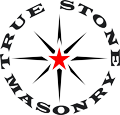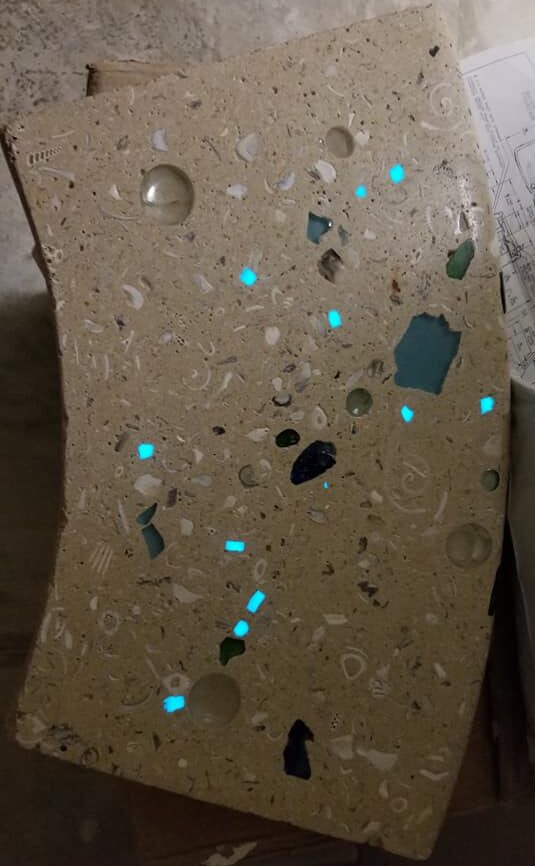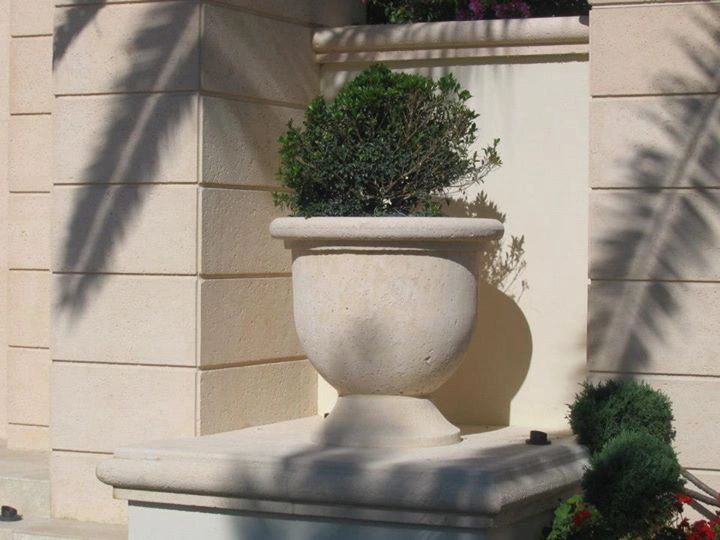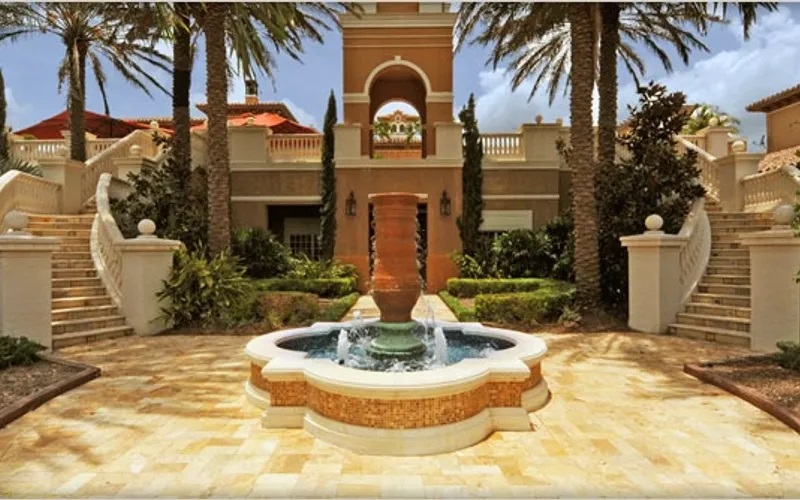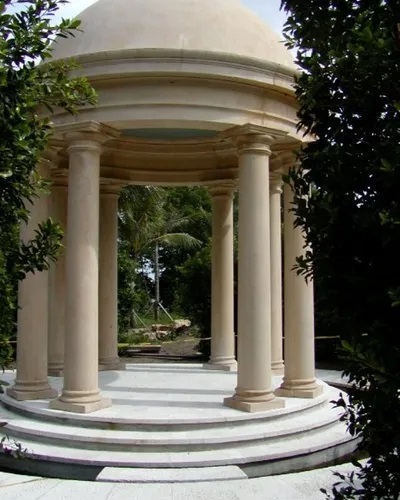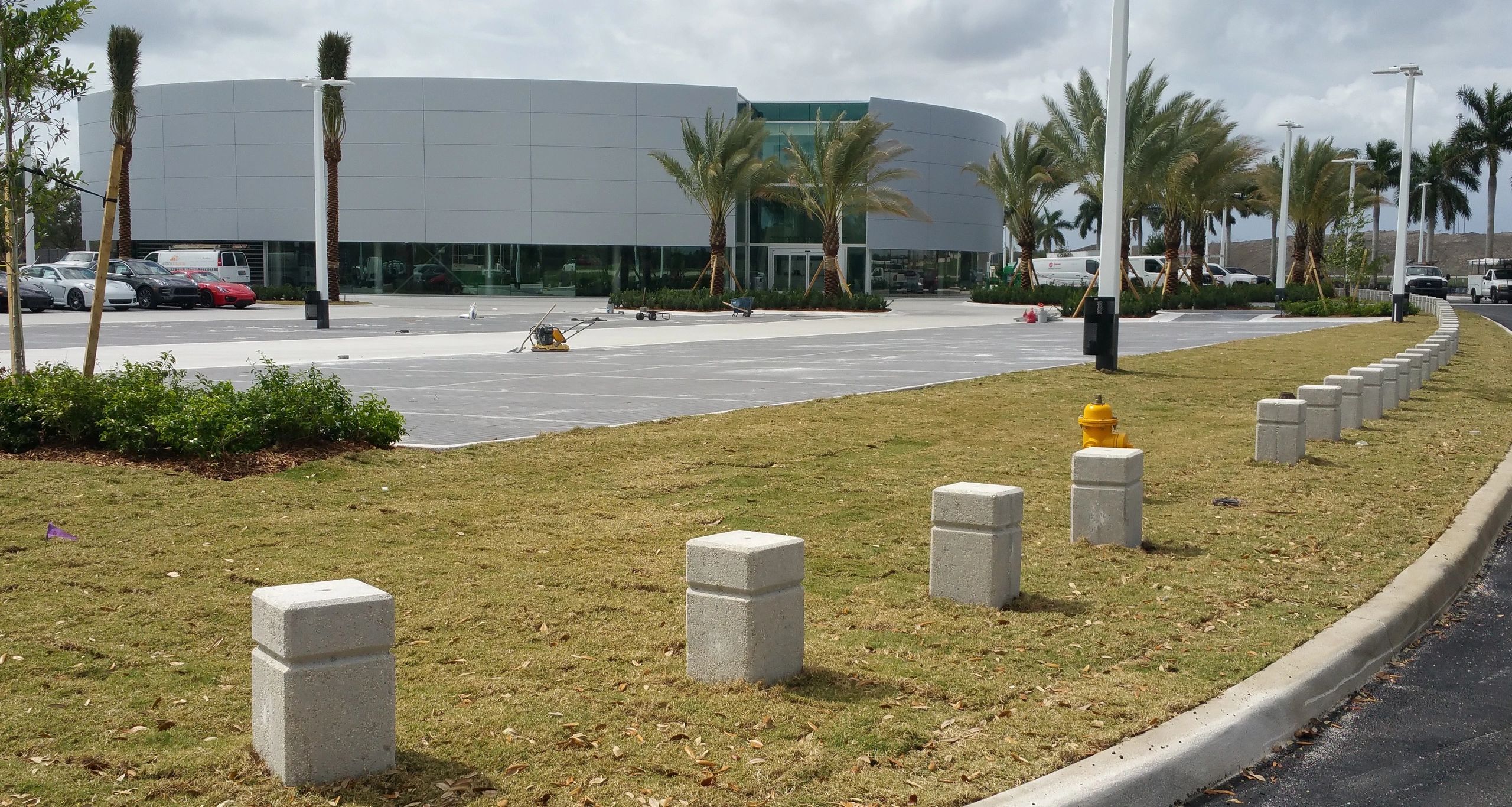
Cast stone falls within that broad definition where some people use cast stone, pre cast, architectural pre cast interchangeably. The biggest difference between architectural precast concrete and cast stone according to W. N. Russell III, executive director of the Cast Stone Institute is that “cast stone isn’t permitted to contain bug holes or air voids and must have a fine-grained texture, which is normally achieved by acid etching.”
Cast Stone is best suited as architectural and/or aesthetic uses with structural advantages of concrete since it can be reinforced. Cast stone is made with highly fine and coarse aggregates such as limestone, marble, calcite, granite, quartz, natural sands, Portland cement and coloring pigments. Then pour into mold to achieve a dense texture, similar to natural cut stone. It is available in any color and can look like limestone, brownstone, bluestone, granite, slate, travertine or marble. It can match terra-cotta or brick and makes a perfect substitute for brick shapes. Cast Stone’s appearance is improved by weather, year after year.
Precast Concrete is best used in none visible areas, where the appearance of air voids and surface irregularities is not an important consideration. Precast concrete is ordinarily made combination of sand, dark color gravel, pebbles, rock, and cement. All of which is poured into a mold where gradation of aggregates is not so important. After several years of weathering, the dark aggregates will begin to show.
Architectural Precast Concrete is best suited for projects where the appearance is not important and is usually used in the form of large curtain wall panel units or large spandrel members. Large aggregates of various colors mixed with a wet slurry of sand and cement is use then poured into the mold. The surface has exposed the aggregates, resulting in a pebbly-with-voids type of finish.
Precast concrete is less costly to manufacture because aggregates cost less and no surface finishing is required. Due to weathering there is a definite advantage in using Cast Stone rather than precast concrete.
